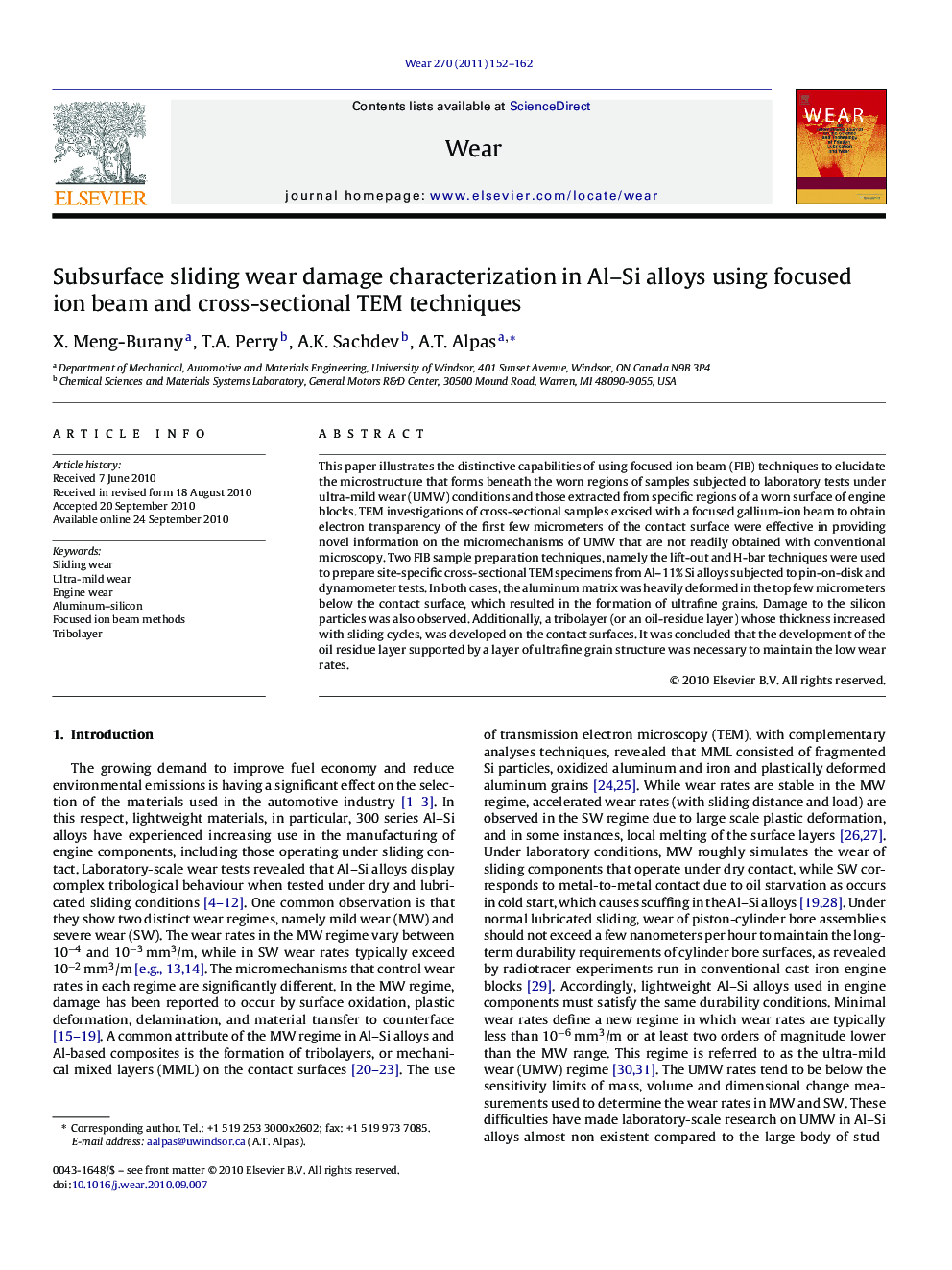| Article ID | Journal | Published Year | Pages | File Type |
|---|---|---|---|---|
| 618461 | Wear | 2011 | 11 Pages |
Abstract
The purpose of the research summarized in this manuscript was to conduct TEM studies of the microstructure that forms at specific locations of worn regions of samples used for bench wear tests and samples extracted from engine blocks using FIB techniques. TEM samples excised from actual wear tracks, allowed us to image the actual sub-surface damage features and also to conduct a detailed chemical analysis of the very thin surface layer that forms during wear testing. The microstructures that form under ultra-mild wear (UMW) conditions were elucidated. Novel information on the subsurface damage features of UMW that is not readily obtained with conventional microscopy was obtained. The aluminum matrix was heavily deformed in the top few microns below the contact surface, which resulted in the formation of ultrafine grains. Damage to the silicon particles was also observed. Additionally, a tribolayer (or an oil-residue layer) whose thickness increased with sliding cycles, was developed on the contact surfaces. It was concluded that the development of the oil residue layer supported by a layer of ultrafine grain structure was necessary to maintain the very low wear rates.
Related Topics
Physical Sciences and Engineering
Chemical Engineering
Colloid and Surface Chemistry
Authors
X. Meng-Burany, T.A. Perry, A.K. Sachdev, A.T. Alpas,
